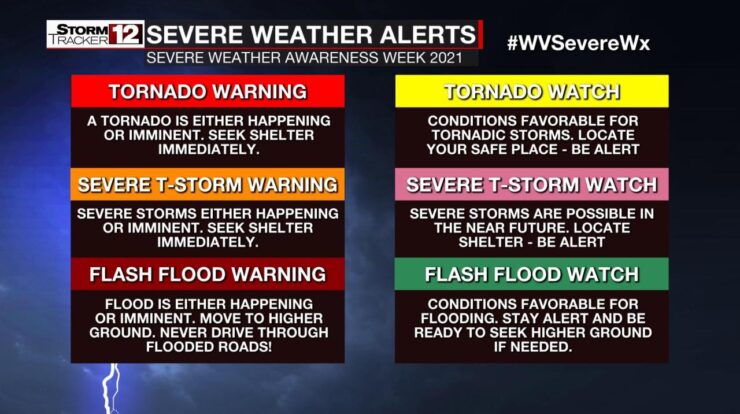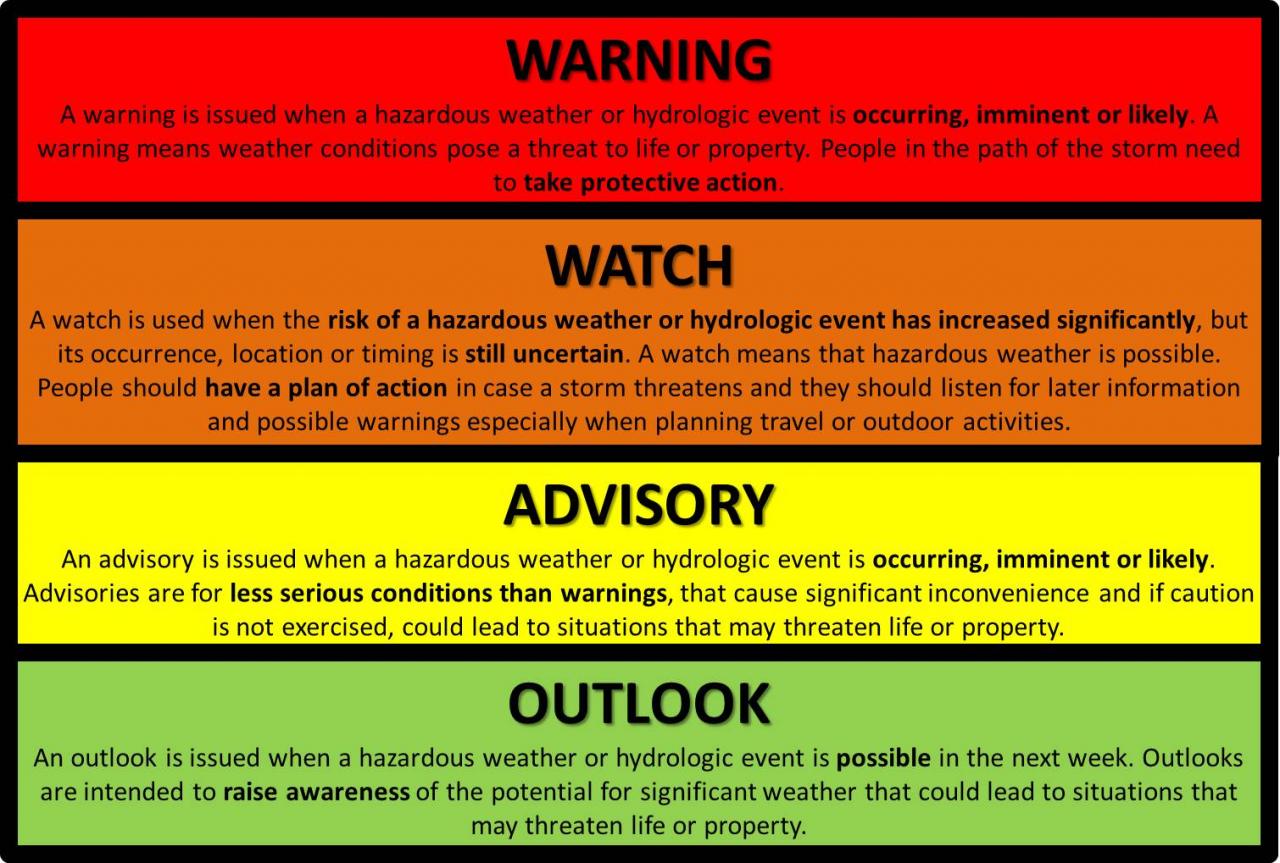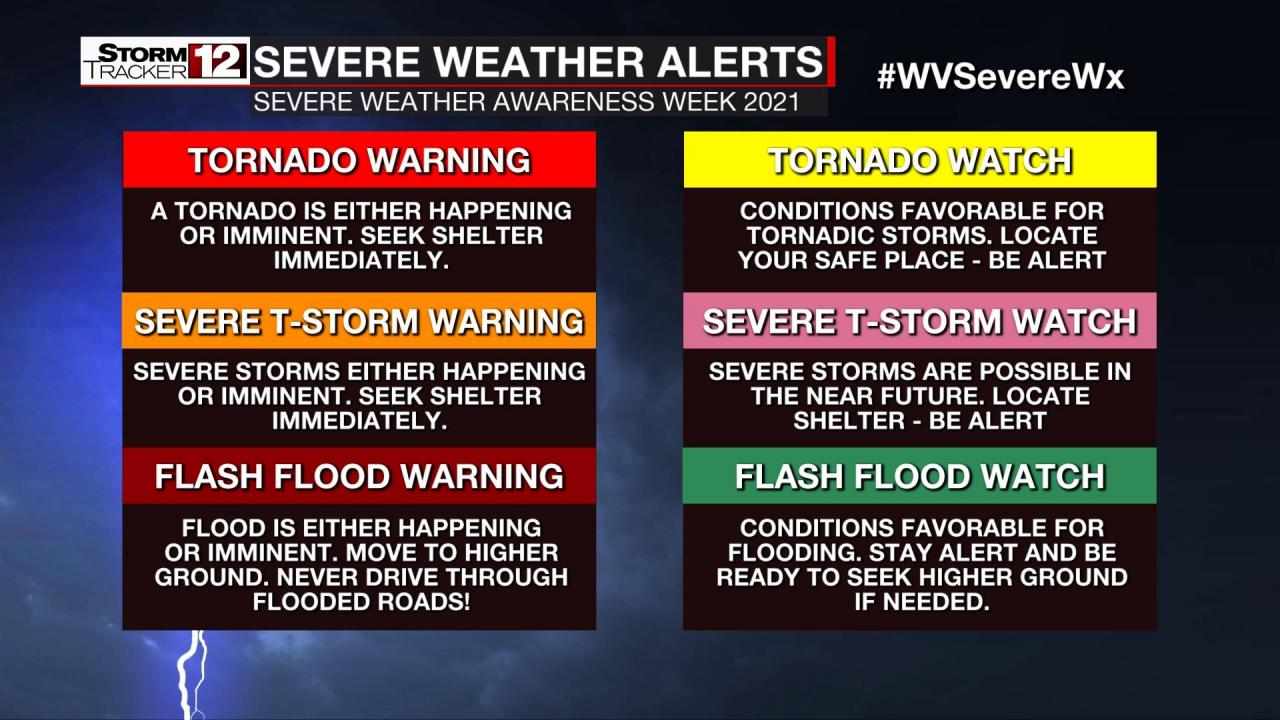
Difference between watch and warning – Navigating the nuances of watch and warning can be daunting, but understanding their distinct roles is crucial for safeguarding lives and property. This comprehensive guide delves into the differences between these alerts, empowering you with the knowledge to make informed decisions in the face of potential threats.
Delving into the intricacies of watch and warning systems, we explore the criteria that trigger each alert, their varying threat levels, and the appropriate actions to take in response. Real-world examples illustrate the practical implications of these alerts, showcasing their impact on communities and individuals.
Introduction
Watches and warnings are two types of alerts issued by the National Weather Service (NWS) to inform the public about potential hazards. Watches are issued when conditions are favorable for a hazardous event to develop, while warnings are issued when a hazardous event is imminent or occurring.
Examples of watches include:
- Tornado watch: Issued when conditions are favorable for tornadoes to develop.
- Flood watch: Issued when conditions are favorable for flooding to occur.
Examples of warnings include:
- Tornado warning: Issued when a tornado has been spotted or is indicated by radar.
- Flood warning: Issued when flooding is imminent or occurring.
Differences between Watches and Warnings

The main difference between a watch and a warning is the level of threat posed by each type of alert.
A watch means that conditions are favorable for a hazardous event to develop, but it does not mean that the event is imminent or occurring. A warning, on the other hand, means that a hazardous event is imminent or occurring and that action should be taken to protect life and property.
The NWS issues watches and warnings based on the following criteria:
- Watches are issued when there is a potential for a hazardous event to develop within the next 12 to 24 hours.
- Warnings are issued when a hazardous event is imminent or occurring within the next 60 minutes.
The NWS recommends that people take the following actions in response to watches and warnings:
- Watches:Be aware of the potential for a hazardous event to develop and monitor weather conditions closely.
- Warnings:Take immediate action to protect life and property. This may include evacuating the area, taking shelter, or securing loose objects.
Examples of Watches and Warnings
Here are some examples of real-world watches and warnings:
- Tornado watch:Issued on May 20, 2013, for parts of Oklahoma and Texas. A tornado warning was later issued for the city of Moore, Oklahoma, when a tornado was spotted on the ground.
- Flood watch:Issued on March 12, 2019, for parts of the Midwest. A flood warning was later issued for the city of Omaha, Nebraska, when the Missouri River reached flood stage.
These are just a few examples of the many watches and warnings that are issued by the NWS each year. It is important to be aware of the difference between watches and warnings and to take appropriate action when either type of alert is issued.
How to Stay Informed about Watches and Warnings: Difference Between Watch And Warning
There are several ways to stay informed about watches and warnings:
- NOAA Weather Radio:NOAA Weather Radio is a network of radio stations that broadcast weather forecasts, watches, and warnings 24 hours a day, 7 days a week.
- Local TV and radio stations:Most local TV and radio stations broadcast weather forecasts and warnings as part of their regular newscasts.
- Mobile phone apps:There are several mobile phone apps that provide weather forecasts and warnings. Some of these apps also allow you to receive push notifications for watches and warnings.
It is important to stay informed about watches and warnings, especially if you live in an area that is prone to hazardous weather. By being aware of the potential for hazardous weather and taking appropriate action, you can help to protect yourself and your family.
Final Thoughts

Staying informed about watches and warnings is paramount for ensuring preparedness and safety. By utilizing multiple communication channels and adhering to safety guidelines, individuals can effectively mitigate risks and safeguard their well-being. This guide serves as an invaluable resource, providing a comprehensive understanding of watch and warning systems, empowering readers to navigate potential threats with confidence.
Popular Questions
What is the primary difference between a watch and a warning?
A watch indicates a potential threat, while a warning signifies an imminent or ongoing hazard.
When should I take action in response to a watch?
Monitor the situation closely and be prepared to act if the threat materializes.
What should I do if a warning is issued?
Take immediate action to protect yourself and others, following the recommended safety guidelines.